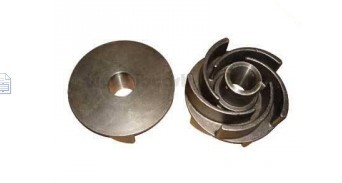
- [email protected]
- 0086-371-86560898

Contact us now for any need or questions about our company or product.


Precision Investment Casting - Cast in More Than Just Stone, Cast in Metal!
Investment casting is one of the oldest known metalworking processes in existence. Beginning more than 5,000 years ago as "lost wax investment casting" the historical process used bee's wax to form a pattern which was then used to create various components and products.Fast forward to today, thousands of years later and the science remains the same. However, investment casting foundries all over the world have introduced new innovations such as high-tech waxes, advanced refractory materials, and the many advances made possible by computers and computer aided design.Similar to the results of our ancient ancestors when they did it, casting provides unparalleled accuracy, repeatability, and quality -- this makes the investment casting of small parts and large parts in high quality alloys a fantastic alternative to other less precise fabricating methods.The Investment Casting Process: An OverviewDesignThe investment casting process begins with a design. This can be a drawing or an existing prototype part.Mold Making The next step is mold making. From a drawing, design, or prototype the investment casting foundry produces an injection mold. This wax pattern injection mold is then machined using computer assisted design and/or computer aided manufacturing, a marriage of both ancient science and cutting edge technology.Wax Pattern AssemblyMultiple wax pattern injection molds are assembled on a tree or "sprue" to form the full part.CoatingIn the next part of the process, a ceramic shell or prime slurry is applied to the tree or sprue, coating the wax assembly in a fine ceramic liquid. While the slurry is still wet, it is covered in a very fine sand and then allowed to dry before another slurry and more sand is applied. This is repeated until there are 6 or more layers of ceramic shell on the wax assemblyWax RemovalNext in the process, the ceramic shells are prepared for the wax assembly to be removed from the inside. This is done with an autoclave, where the ceramic shells are put on a tray and the autoclave uses steam to melt the wax inside the mold.High Temp BurnoutAfter wax is removed the ceramic shells are subjected to a high-temperature burnout to cure the ceramic molds. After this process they are prepared for preheating and casting.Metal Melting and CastingIn this step of the precision investment casting process, high quality alloys are melted in lined furnaces. This step is absolutely critical to ensure the casting quality. Also in this part of the process, degassing and alloying are performed to ensure the melted metal's properties are optimal for pouring. This metal is then cast into the ceramic mold.CoolingAfter cooling, the metal casting takes the shape of what was once the wax pattern. Once the casting cools, the ceramic shell is removed with high powered water jets, leaving the casting foundry with a completed metal investment casting.Cut Off, Grinding, and FinishingUnwanted gates are then cut off with a saw and further removed by grinding. This is followed by de-burring and hand tooling, machining, and finishing resulting in a completed and finished casting.While this is one specific way investment casting is performed, there are also other methods of creating castings -- such as vacuum casting, which is typically used for Aluminum casting. Just as the ancient history of investment casting has seen the process through thousands of years of innovation, the technological advancements of the modern day and of casting foundries such as Sebon company continue to prove that the process will always have a place in the manufacturing of new parts, components and products.